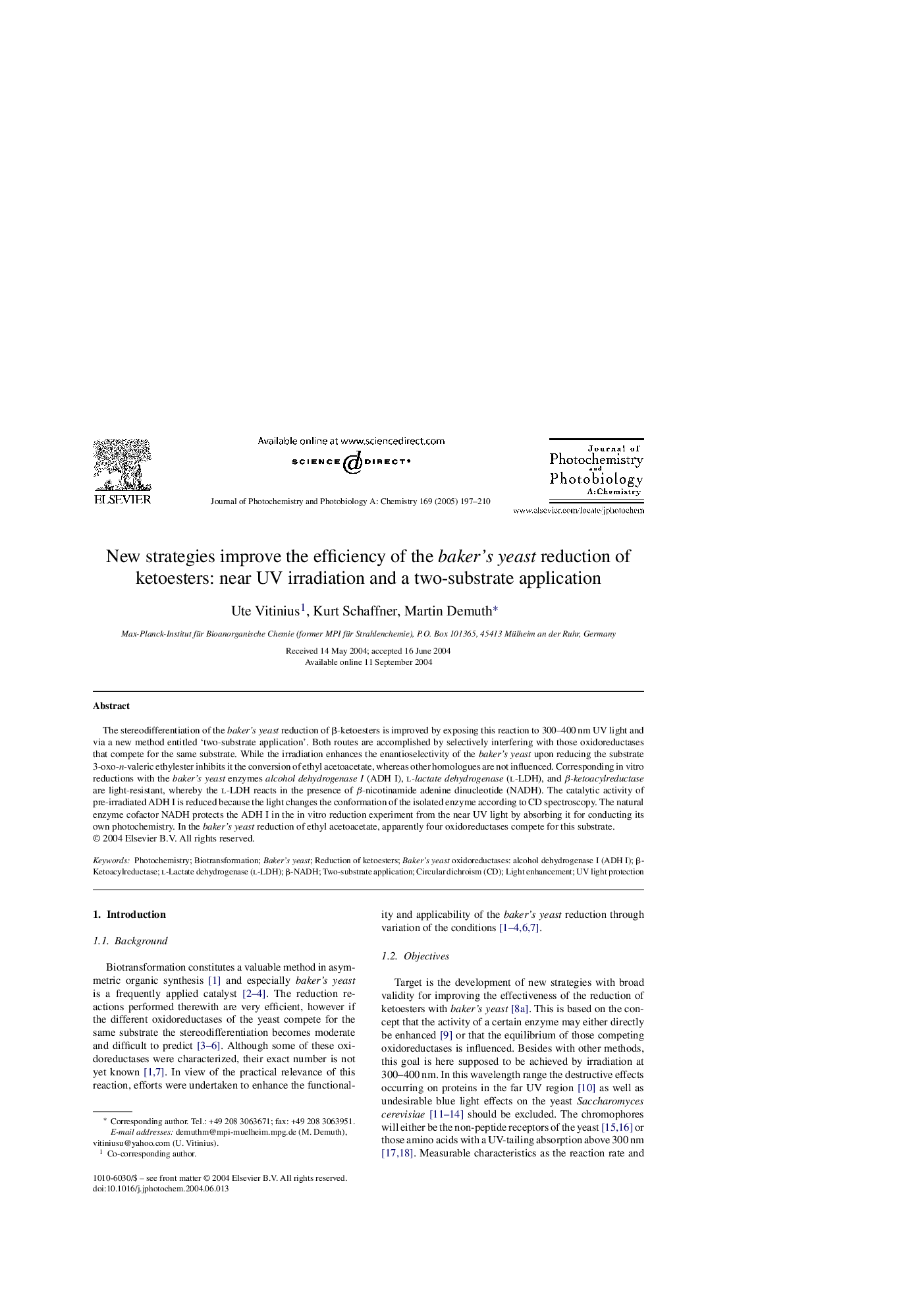| Article ID | Journal | Published Year | Pages | File Type |
|---|---|---|---|---|
| 9605769 | Journal of Photochemistry and Photobiology A: Chemistry | 2005 | 14 Pages |
Abstract
The stereodifferentiation of the baker's yeast reduction of β-ketoesters is improved by exposing this reaction to 300-400 nm UV light and via a new method entitled 'two-substrate application'. Both routes are accomplished by selectively interfering with those oxidoreductases that compete for the same substrate. While the irradiation enhances the enantioselectivity of the baker's yeast upon reducing the substrate 3-oxo-n-valeric ethylester inhibits it the conversion of ethyl acetoacetate, whereas other homologues are not influenced. Corresponding in vitro reductions with the baker's yeast enzymes alcohol dehydrogenase I (ADH I), l-lactate dehydrogenase (l-LDH), and β-ketoacylreductase are light-resistant, whereby the l-LDH reacts in the presence of β-nicotinamide adenine dinucleotide (NADH). The catalytic activity of pre-irradiated ADH I is reduced because the light changes the conformation of the isolated enzyme according to CD spectroscopy. The natural enzyme cofactor NADH protects the ADH I in the in vitro reduction experiment from the near UV light by absorbing it for conducting its own photochemistry. In the baker's yeast reduction of ethyl acetoacetate, apparently four oxidoreductases compete for this substrate.
Related Topics
Physical Sciences and Engineering
Chemical Engineering
Bioengineering
Authors
Ute Vitinius, Kurt Schaffner, Martin Demuth,
